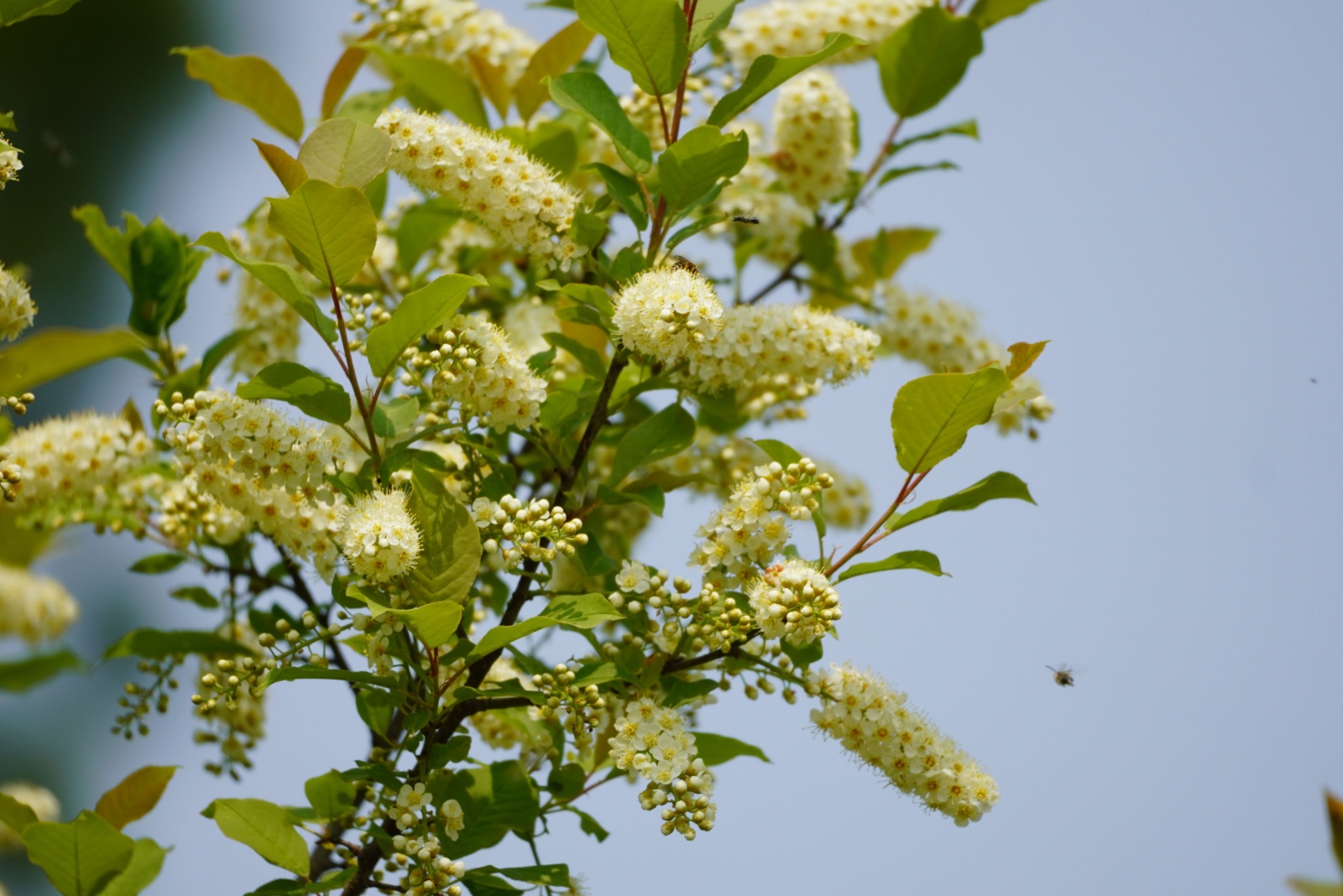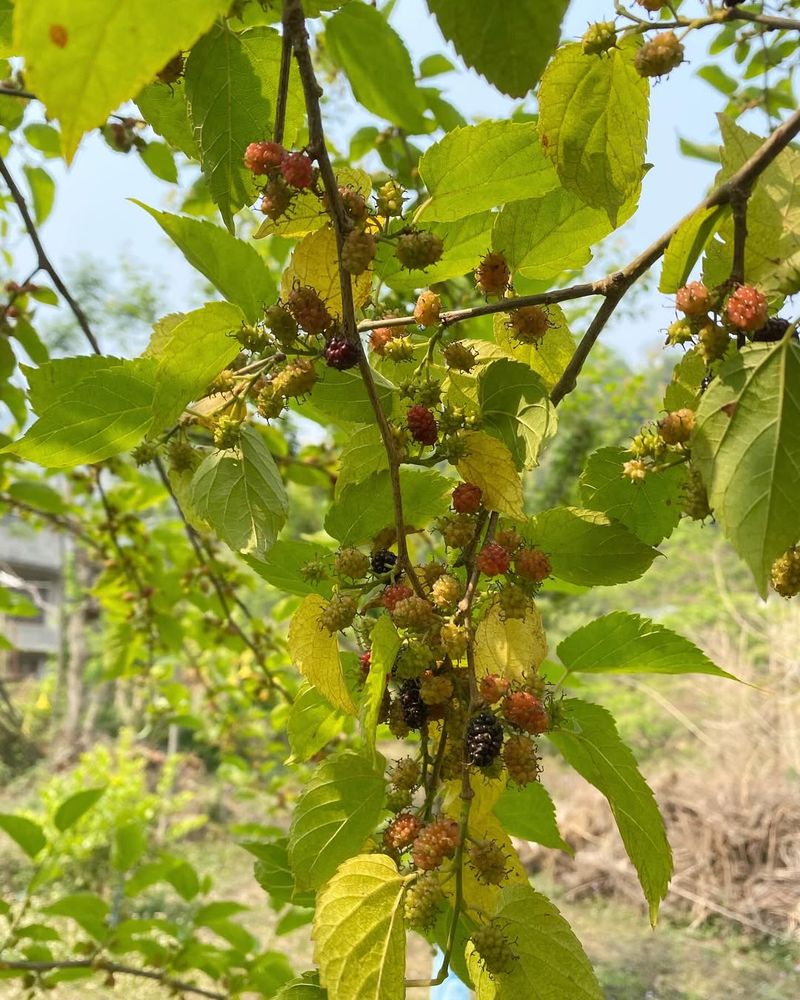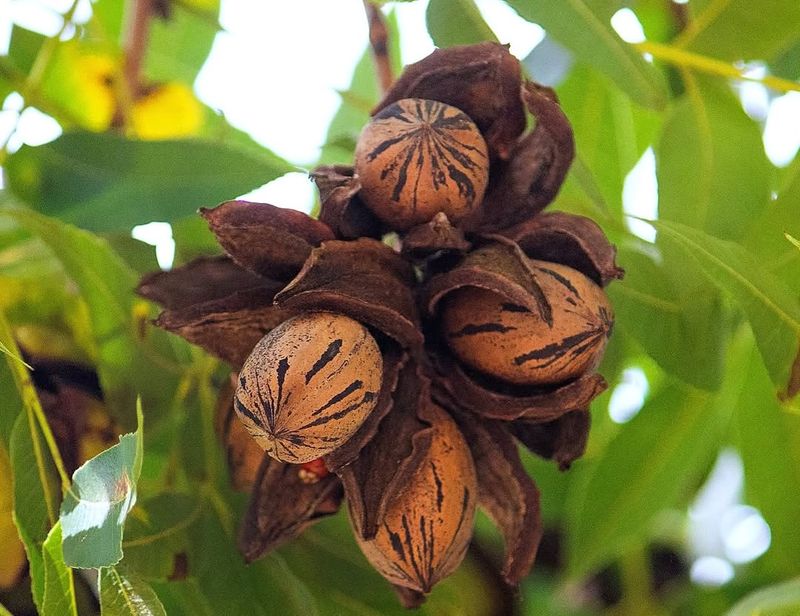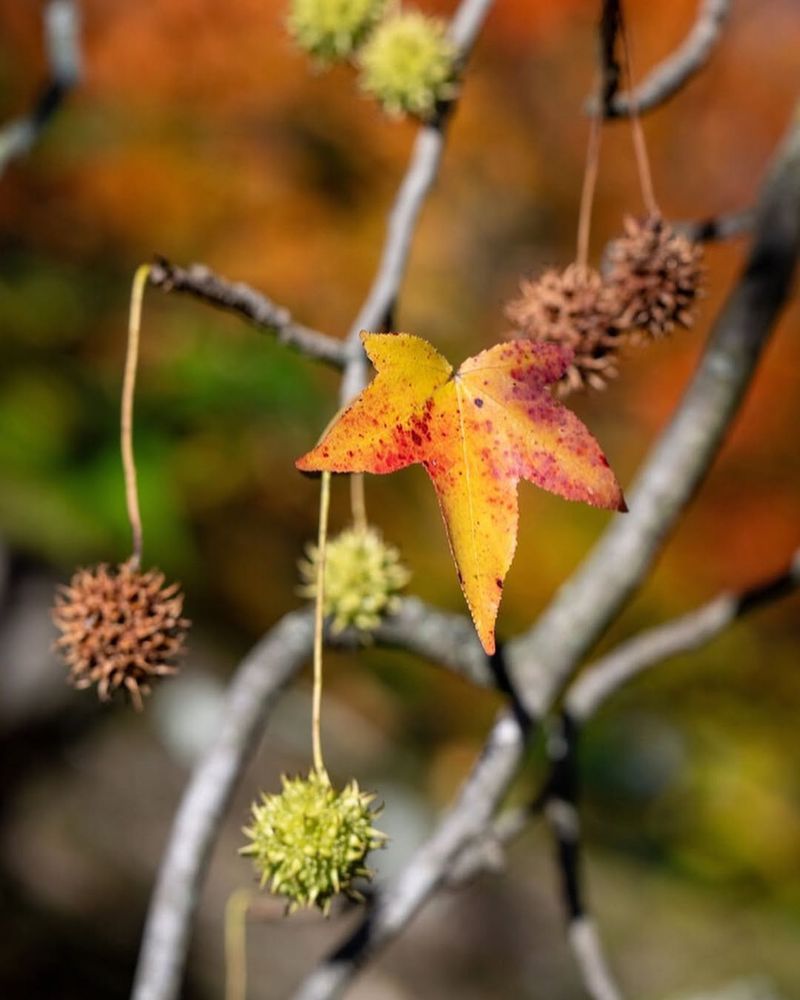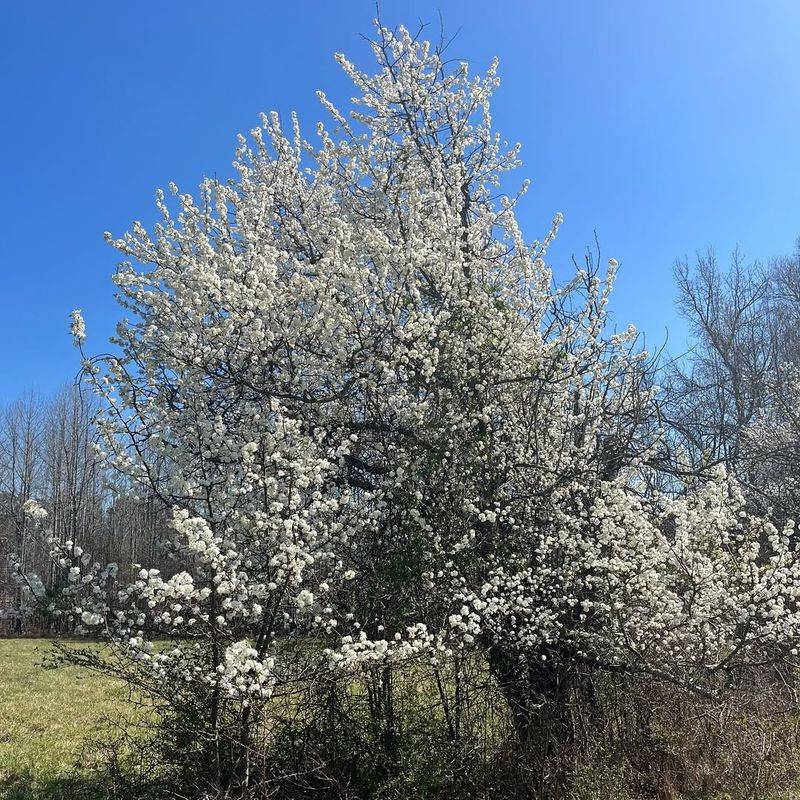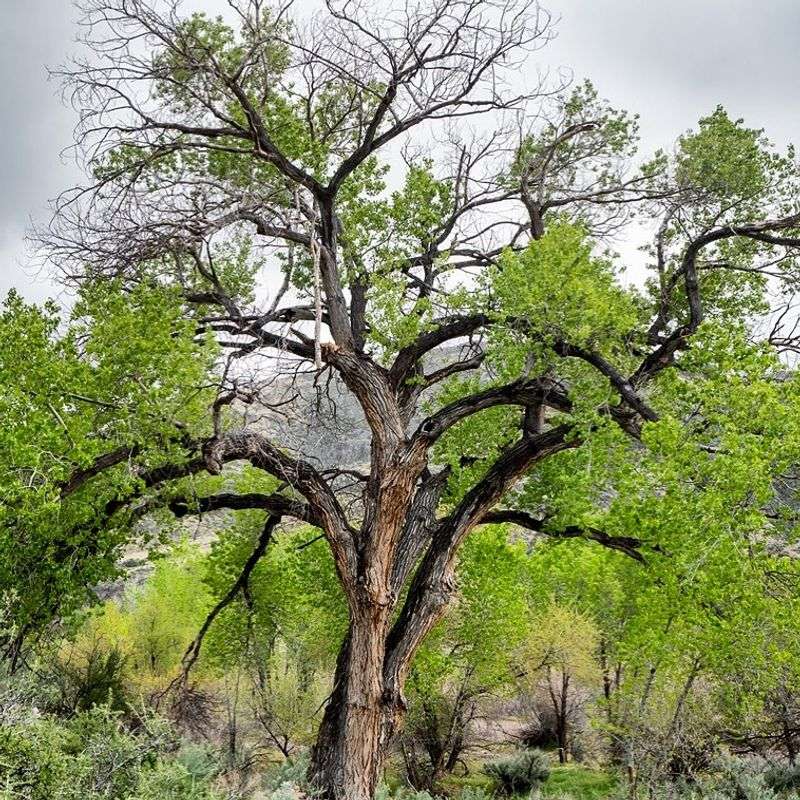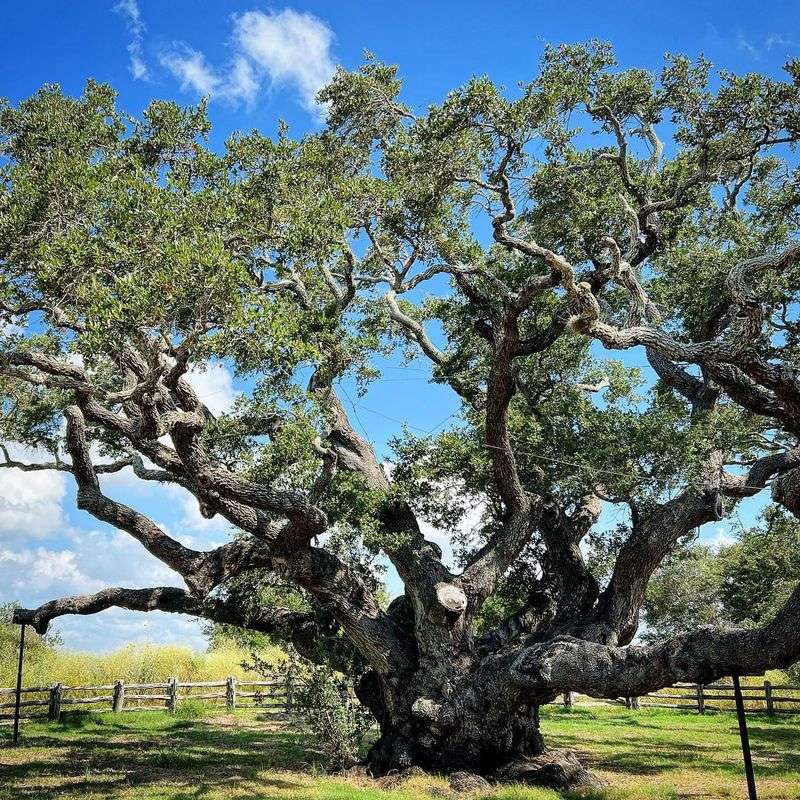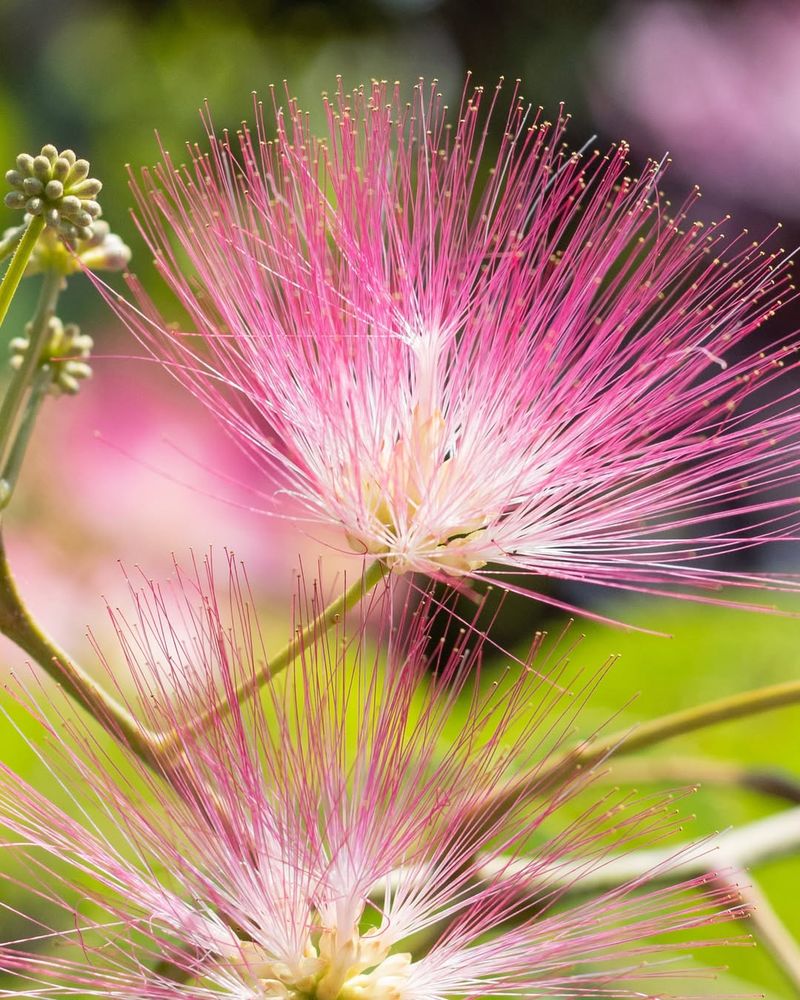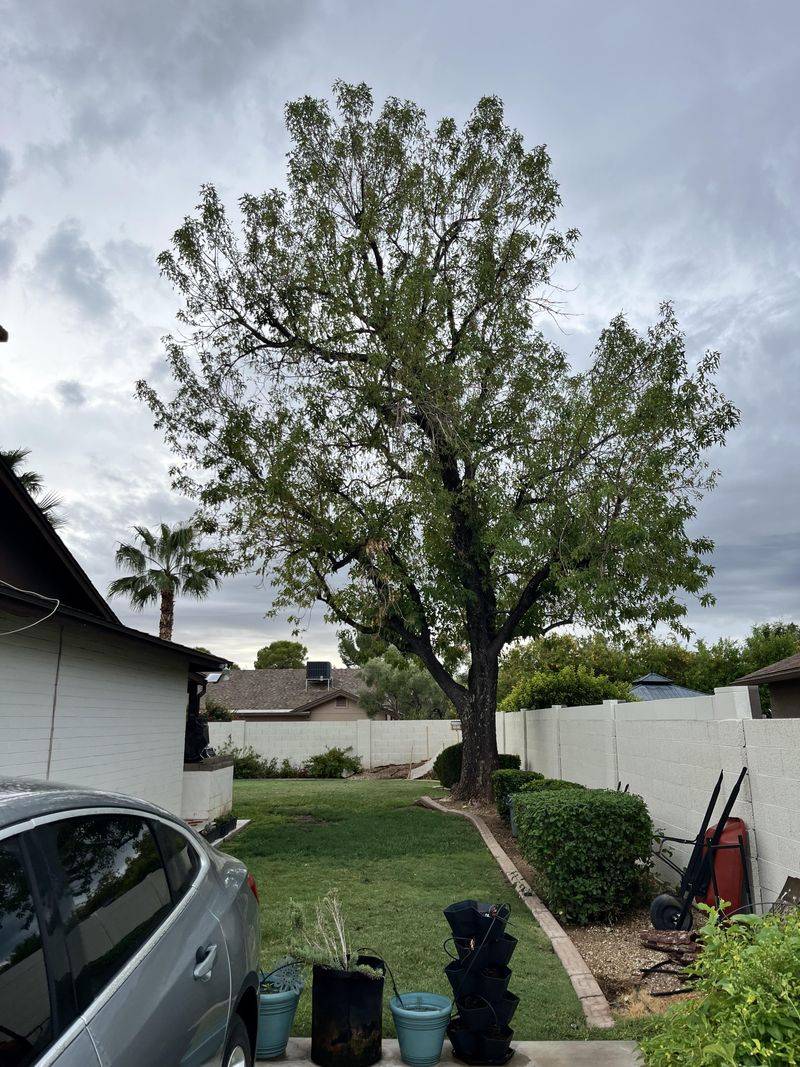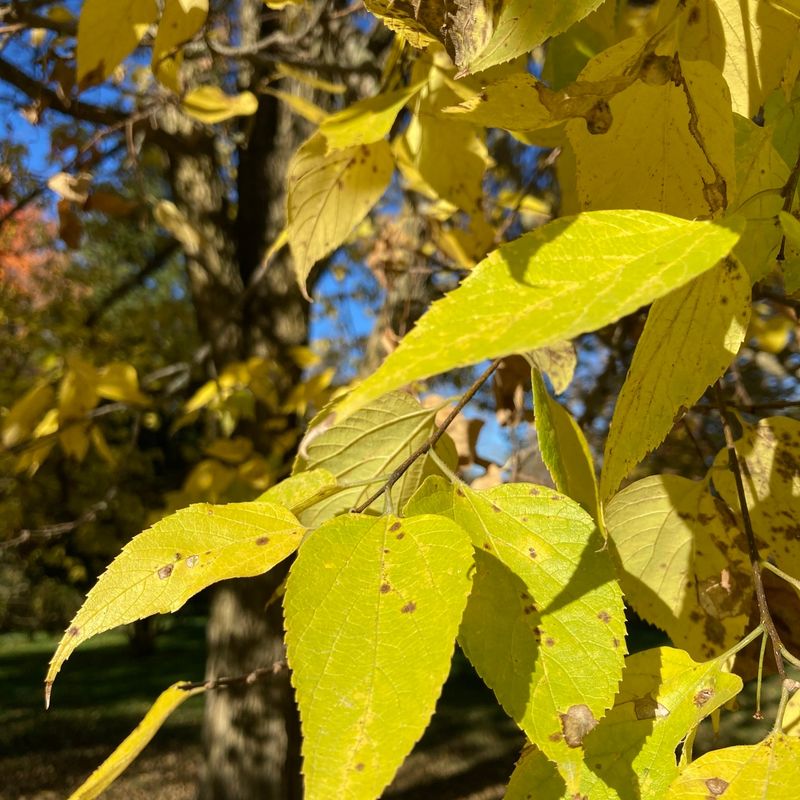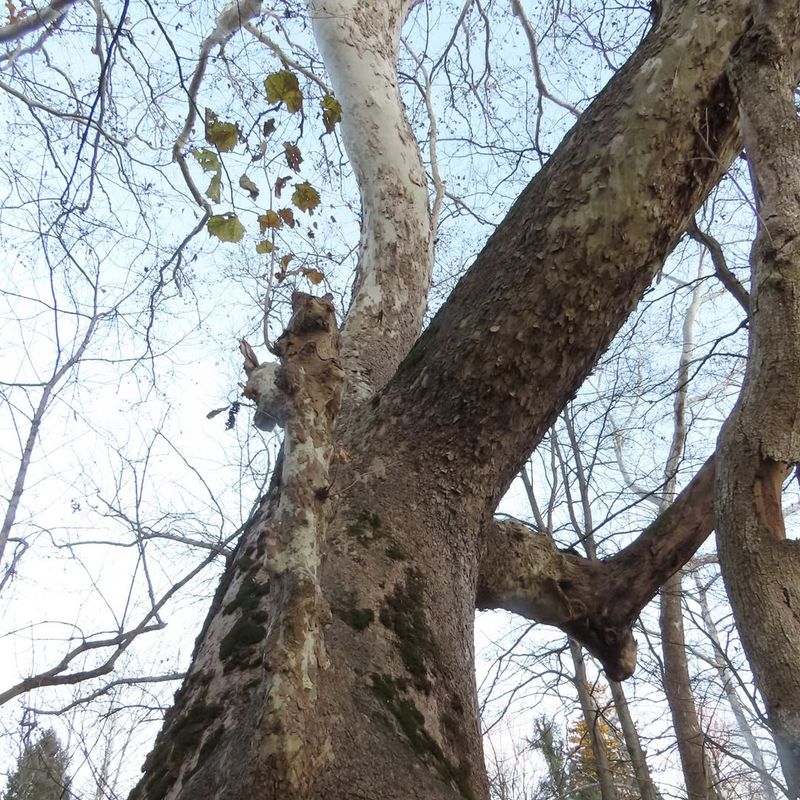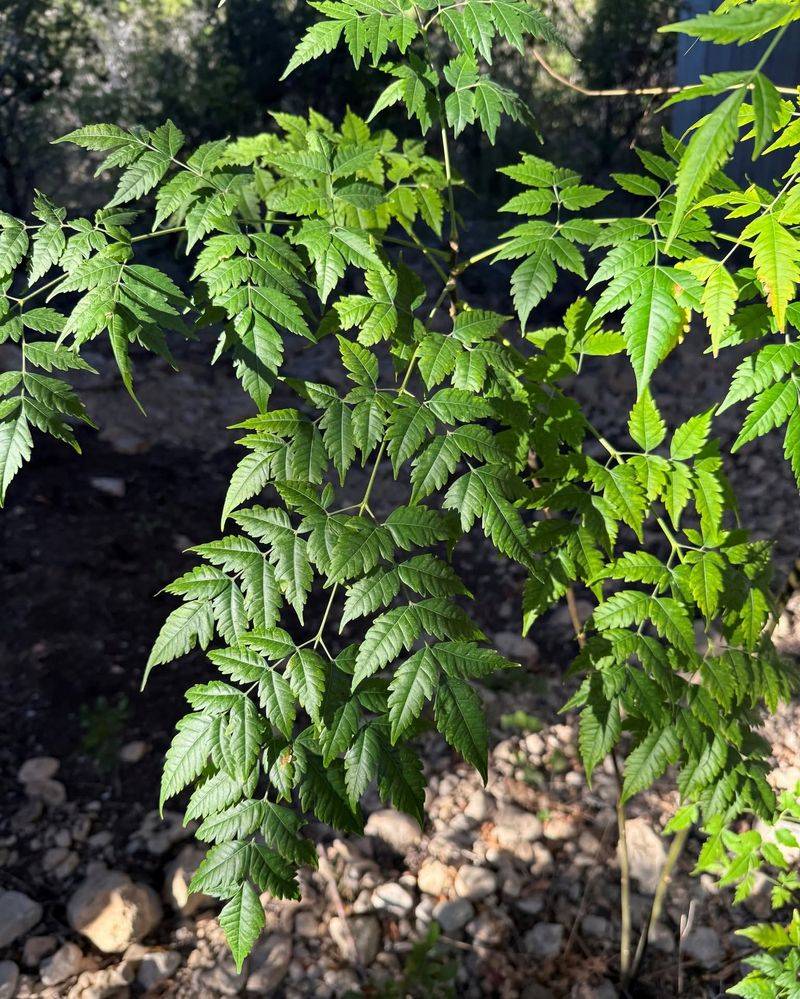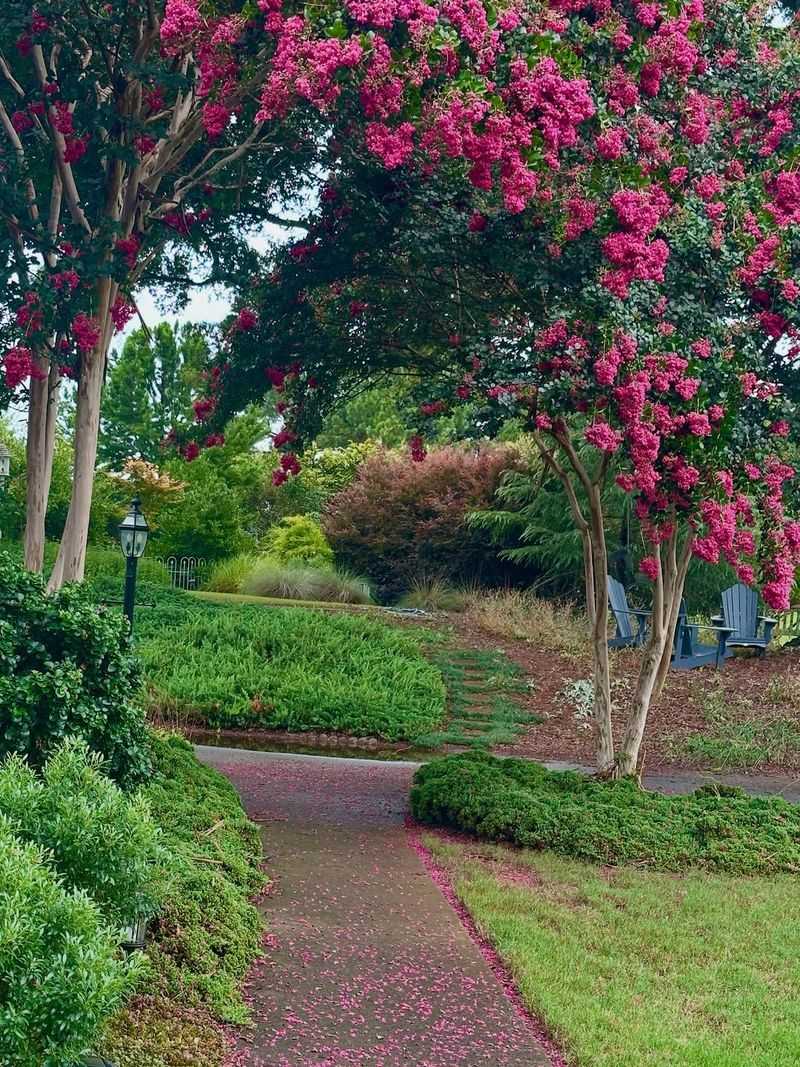Texas yards can be beautiful, but some trees create more work than they’re worth. Dropping leaves, sticky sap, messy fruit, and constant debris can turn yard maintenance into a full-time job.
If you’re thinking about planting new trees or already dealing with cleanup headaches, knowing which species cause the most trouble can save you time and frustration.
1. Mulberry Trees
Mulberries produce abundant fruit that stains everything it touches, from Texas sidewalks to cars parked underneath. Birds love eating the berries, which means they’ll leave purple droppings all over your patio furniture and driveway.
Cleanup becomes a daily chore during fruiting season, usually lasting several weeks in late spring. The fallen berries attract insects and create slippery surfaces that can be dangerous.
Many homeowners regret planting mulberries near walkways or outdoor living spaces because of the constant mess.
2. Pecan Trees
While pecans are delicious, the trees drop far more than just nuts. Leaves, branches, husks, and pollen create year-round cleanup challenges for Texas homeowners.
Heavy winds cause large limbs to break off, potentially damaging property or injuring people below. The nut husks stain concrete and are tough to rake up because they stick to everything.
Squirrels scatter pecan shells everywhere, adding to the mess. Mowing becomes difficult when pecans cover your lawn, and the pollen triggers allergies in many people.
3. Sweet Gum Trees
Sweet gums are notorious for their spiky seed pods called gumballs that cover lawns by the thousands. Walking barefoot becomes impossible, and these hard balls wreck lawn mower blades regularly.
Raking them up takes hours because they roll away and hide in grass. Kids and pets can step on them painfully, making play areas less enjoyable.
The tree also drops sticky sap and leaves throughout the year, keeping you constantly busy with cleanup tasks nobody enjoys.
4. Bradford Pear Trees
Bradford pears smell absolutely terrible when they bloom in spring, producing an odor many compare to rotting fish. Beyond the stench, these trees have weak branch structures that split apart during storms.
Broken limbs create hazardous cleanup situations and expensive removal costs. The trees also produce small fruits that attract birds, leading to more droppings around your property.
Their rapid growth means constant pruning to prevent dangerous splitting, making them high-maintenance choices for Texas landscapes.
5. Cottonwood Trees
Cottonwoods release massive amounts of fluffy white seeds that look like summer snow covering everything outdoors. This cotton clogs air conditioner units, gutters, and pool filters, causing mechanical problems and extra maintenance.
The seeds trigger severe allergies in many people, making outdoor activities miserable for weeks. Cottonwoods also drop sticky buds and enormous quantities of leaves.
Their aggressive root systems damage underground pipes and sidewalks, creating costly repair bills beyond just the surface mess.
6. Oak Trees
Oaks are beloved for shade, but they shed leaves, acorns, and tassels almost constantly throughout the year. Acorns pile up by the hundreds, creating tripping hazards and attracting rodents to your Texas property.
The trees also drop small branches called widow-makers that can cause injuries. Leaf cleanup happens multiple times annually since oaks don’t drop everything at once.
Tannins from fallen leaves and acorns can stain concrete surfaces brown, requiring pressure washing to remove the discoloration completely.
7. Mimosa Trees
Mimosas spread aggressively through seedlings that pop up everywhere in your Texas yard and flower beds. Their beautiful pink blooms quickly turn into brown seed pods that scatter thousands of seeds.
The trees drop flowers, leaves, and pods continuously during growing season, creating nonstop cleanup duties. Mimosas also have shallow roots that buckle sidewalks and compete with grass.
Many consider them invasive because they take over landscapes rapidly, requiring constant removal of unwanted saplings sprouting in inconvenient locations.
8. Arizona Ash Trees
Arizona ash trees grow quickly but have brittle wood that breaks easily during Texas storms and high winds. Fallen branches create dangerous situations and require frequent cleanup after weather events.
The trees drop enormous amounts of seeds that sprout into unwanted seedlings throughout your landscape. Their leaves fall in thick layers that smother grass underneath.
Short lifespans mean you’ll eventually face removal costs, and their messy habits make them poor choices despite their fast shade production capabilities.
9. Hackberry Trees
Hackberries produce small fruits that birds devour, then leave droppings everywhere below the tree canopy. The berries fall constantly during late summer, staining patios and creating slippery walking surfaces.
These trees also attract psyllid insects that cause bumpy growths on leaves, which then drop prematurely throughout the season. Cleanup becomes tedious because the small berries roll into cracks and crevices.
Despite being native to Texas, hackberries rank among the messiest options for residential yards requiring regular maintenance.
10. Sycamore Trees
Sycamores constantly shed bark in large patches, creating unsightly piles of debris around the trunk year-round. Their enormous leaves take forever to decompose and blanket lawns in thick, suffocating layers.
The trees also drop spiky seed balls that hang on through winter before finally falling and scattering everywhere. Sycamores produce fuzzy seeds that irritate skin and respiratory systems when handled.
Keeping up with the constant shedding requires weekly cleanup efforts, making sycamores labor-intensive choices for Texas homeowners.
11. Chinaberry Trees
Chinaberries are considered invasive in Texas and produce toxic yellow berries that litter the ground for months. The berries attract birds but poison other animals, creating safety concerns for pets.
Their aggressive spreading through seeds means you’ll constantly battle unwanted saplings popping up everywhere. The trees also drop flowers, leaves, and sticky sap throughout growing season.
Many neighborhoods ban chinaberries because they take over native landscapes and create maintenance nightmares for property owners trying to control their spread.
12. Crape Myrtle Trees
Crape myrtles shed bark continuously, leaving papery pieces scattered around the base that blow everywhere in wind. Their flowers fade and drop, creating colorful but messy carpets underneath.
The trees produce seed capsules that persist through winter, eventually falling and spreading thousands of seeds. Aphids frequently infest crape myrtles, causing sticky honeydew to drip onto cars and surfaces below.
While beautiful when blooming, these trees demand regular cleanup and pest management to keep your Texas yard looking presentable throughout the year.

